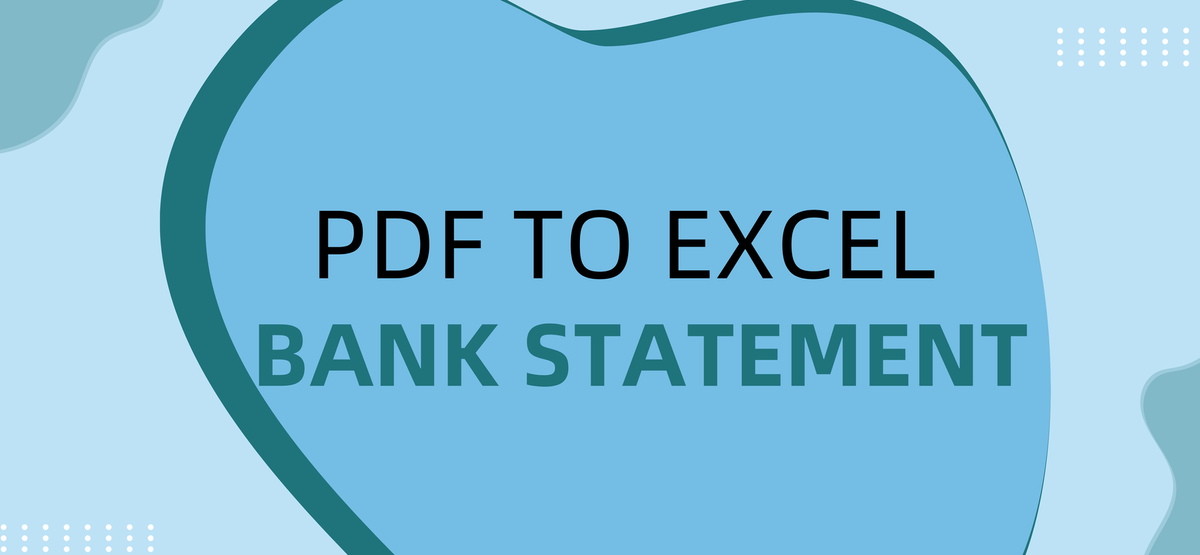If you’re here, you likely want a simple and reliable way to turn your PDF bank statements into Excel. Whether you need it for budgeting, tracking expenses, or organizing financial records, converting these files accurately is key to avoiding manual data entry and potential mistakes.
This guide will help you understand the steps to quickly and accurately convert your bank statements into an editable, shareable Excel format.
By the end, you’ll have everything you need to simplify your financial tasks and save time. Let’s get started!
How to Convert PDF Bank Statements to Excel
Converting your PDF bank statement into Excel is simple. Here’s how:
Step 1: Visit convertmybankstatement.com and press the “Click here to convert a PDF” button.
Step 2: Upload the PDF bank statement you wish to convert.
Step 3: After uploading the file, press the “Convert” button to process your file.
Sep 4: Once your file is converted, preview the Excel version. To save it, click “Download”.
Step 5: After downloading the file, locate the Excel file on your device. You can now review your data in the newly converted format.
Why Convert Bank Statements to Excel?
Unlike static PDF files, Excel gives you the flexibility to organize, analyze, and manipulate your financial data which can save you time and help you make better decisions.
Here are some key benefits and practical use cases for converting your bank statement to Excel:
1. Simplified Budgeting
Excel makes it easy to categorize your income and expenses. You can sort transactions by date. Type or category to see exactly where your money is going. This will help you create a custom budget and track spending to match your financial goals.
2. Detailed Data Analysis
With Exce’s formulas and tools, you can break down the financial data. You can use pivot tables to summarize your spending pattern, calculate monthly savings, or analyze year-over-year income trends.
3. Easier Tax Preparation
Excel simplifies the process of organizing your finances for tax season. You can quickly filter and group transactions to identify deductible expenses or calculate total income.
4. Improved Collaboration
If you’re managing shared finances or working with an advisor, Excel files are easy to share and collaborate on. Unlike PDFs, Excel allows everyone involved to make updates, add notes, or highlight important transactions in real-time.
6. Streamlined Reporting
For business owners or freelancers, Excel is invaluable for creating reports. You can convert your bank statements to Excel and integrate them into financial summaries, profit-and-loss statements, or cash flow projections.
Conclusion
Converting your bank statements from PDF to Excel is quick and easy with tools like ConvertMyBankStatement.com. Excel gives you the flexibility to organize, analyze, and share your financial data, whether you’re budgeting, preparing taxes, or creating reports.
Follow the steps in this guide to simplify your finances and save time. Start your conversion today and take control of your financial management!
FAQ
1. Is my data secure when using ConvertMyBankStatement.com?
Yes, ConvertMyBankStatement.com prioritizes data security. We typically use encryption to protect your uploaded files and ensure that your data is not stored or shared. You can check the platform's privacy policy for details.
2. Will the converted Excel file retain the formatting of my PDF bank statement?
Most conversion tools strive to maintain the original structure and formatting. However, minor adjustments may be needed, especially with complex layouts. You can use Excel's formatting tools to clean up the data after conversion.
3. Can I convert multiple bank statements at once?
This depends on the tool you’re using. Some platforms, like ConvertMyBankStatement.com, allow batch conversions if you upload multiple files. Check the tool’s features to confirm if it supports this option.



Member discussion: